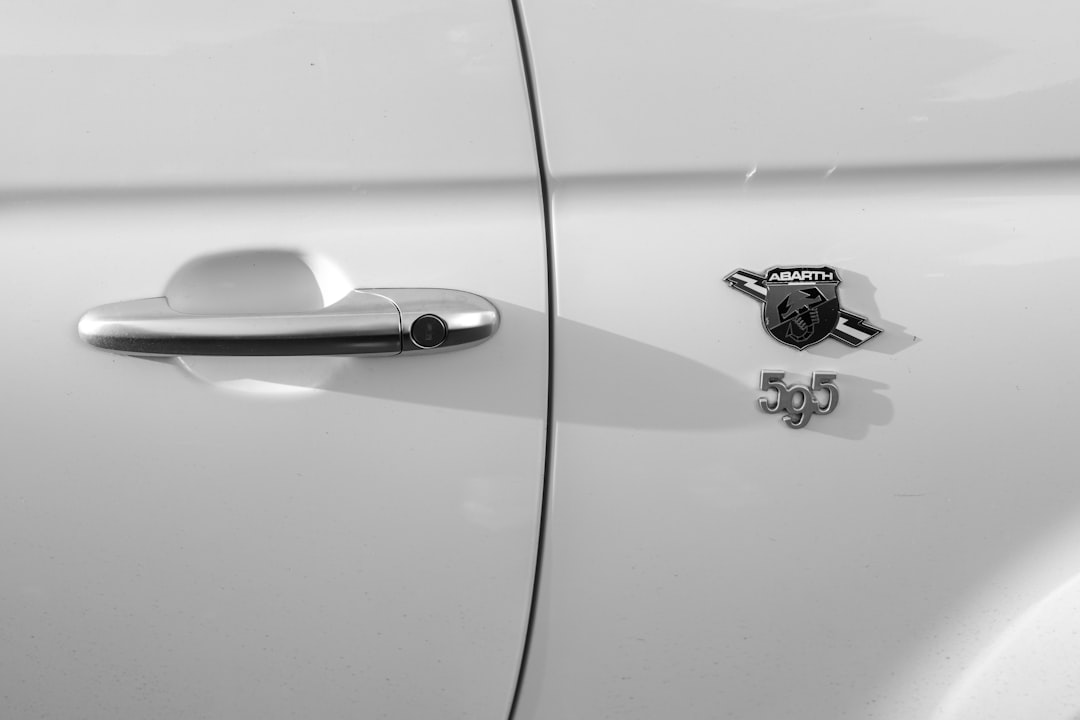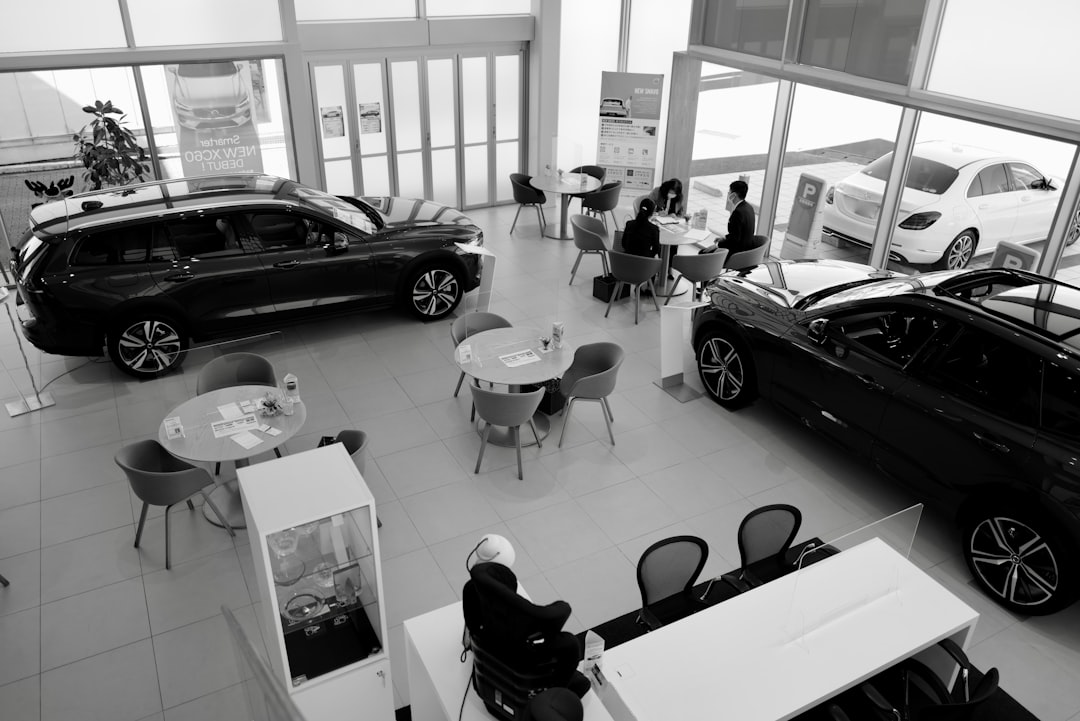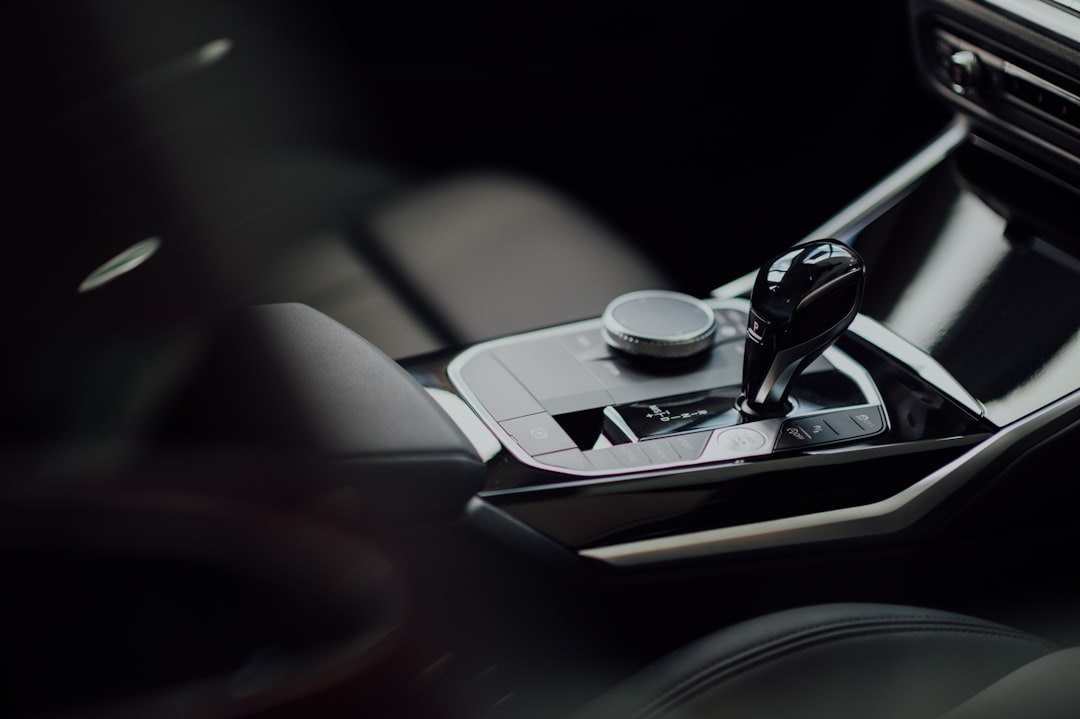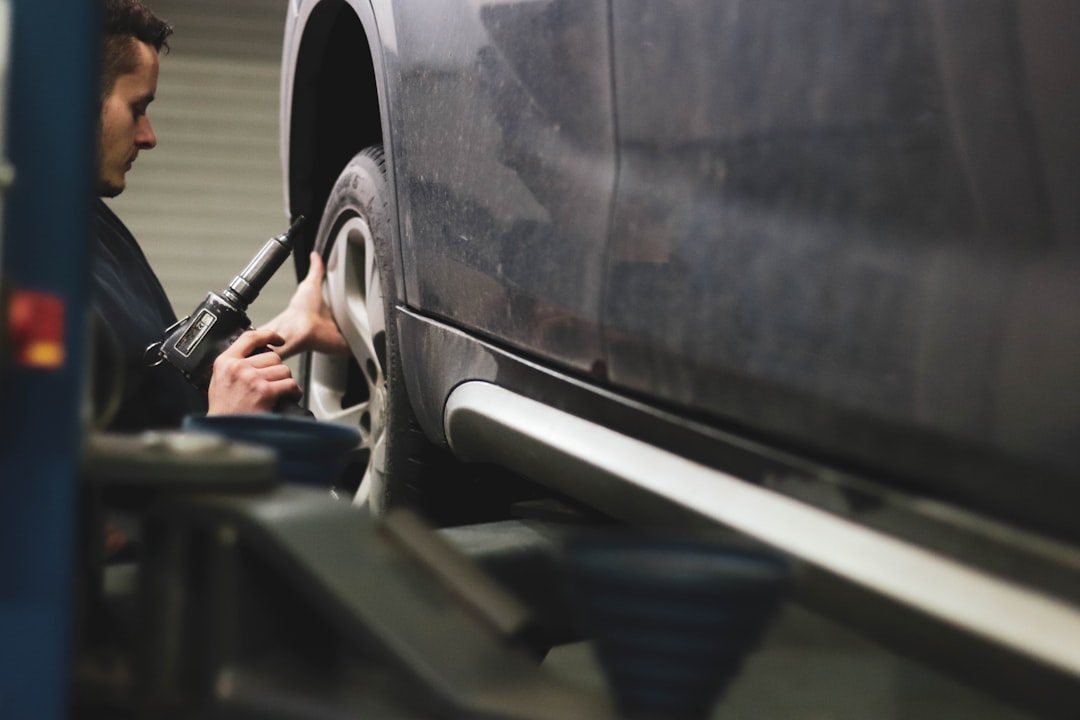

Engage prospects with a scan and streamline customer engagement with FREE QR code marketing tools by Sona – no strings attached!
Create a Free QR CodeFree consultation

No commitment

Engage prospects with a scan and streamline customer engagement with FREE QR code marketing tools by Sona – no strings attached!
Create a Free QR CodeFree consultation

No commitment
Today's digitally driven marketplace brings both fierce competition and rising customer expectations for auto detailing businesses. Traditional marketing methods like flyers, static signage, or physical coupons provide only limited windows to capture leads, track engagement, or understand customer behavior. Without real-time data and digital touchpoints, many business owners miss valuable prospects whose interest is never recorded, which leads to avoidable lost opportunities.
QR codes provide a practical solution to bridge this gap by turning offline interactions into actionable digital touchpoints. When you place scannable codes on in-shop displays, print materials, mailers, or even inside vehicles after a service, you convert momentary interest into measurable engagement. That visibility lets you collect contact information, attribute actions to specific campaigns, and follow up while intent is high.
Integrating QR codes throughout your business can streamline bookings, boost upsell conversions, and create personalized experiences. When used strategically, QR-powered touchpoints help even busy detail shops nurture qualified leads, reduce no-shows, and track every interaction across channels. The following steps outline how QR codes drive lead capture, accelerate growth, and equip auto detailing businesses to reach and engage high-intent audiences more efficiently.

QR codes bridge the gap between physical touchpoints and digital outcomes, making it simpler to set up effective marketing strategies for consistent lead capture and engagement in auto detailing businesses, as outlined in Sona QR’s marketing guide. They turn every printed or in-person moment into a trackable action that adds to your pipeline. For many shops, this means replacing manual, error-prone workflows with fast, mobile-friendly experiences.
Start by mapping where prospects already spend time: waiting areas, service counters, vehicle interiors after service, community events, and neighborhood mailboxes. In each of these settings, QR codes can reduce friction by replacing outdated analog processes. Instead of paper loyalty cards that are forgotten or lost, use a QR-enabled digital wallet card. Instead of a clipboard sign-up at the counter, use a QR that opens a pre-filled form on the customer’s phone. Instead of a flyer with a generic URL that few will type, add a QR that launches a one-tap booking flow.
Here is how to operationalize QR-led lead capture for real business results:
When you execute these fundamentals well, QR codes become an always-on lead engine. Customers can book without calling, staff can focus on service, and managers gain the insight needed to identify which placements and offers create the most revenue.

A significant challenge in auto detailing is the lack of visibility into how prospects engage with your brand. People see a flyer on a community board, a decal on your shop door, or a business card handed out during a mobile visit, yet their interest rarely translates into measurable activity. QR codes make every printed asset and in-store touchpoint interactive and trackable, a tactic gaining traction in automotive marketing as shown in dealership QR strategy. From appointment cards to service menus and window posters, QR codes let potential customers act instantly, moving from awareness to booking or feedback within seconds.
QR codes also accelerate response times. If a prospect scans an appointment card on Saturday afternoon, an automated SMS can invite them to reserve a Monday slot and include a service bundle they viewed. That speed helps you win before a competitor returns a voicemail. Meanwhile, dynamic QR codes let you update destinations after you print, as shown in truck wash QR codes, which keeps offers fresh and reduces waste.
Key benefits include:
By turning your everyday materials into digital gateways, you create a responsive, conversion-focused funnel that is easy to measure and improve. Every scan becomes a chance to continue the conversation that started offline.

Auto detailing businesses often juggle many touchpoints where intent peaks for a few seconds then fades. QR codes counteract this by meeting the customer where they are and triggering the right action immediately. Choosing the right QR format ensures each scan launches the experience best suited to the moment.
For most auto detailers, the following formats are especially useful:
Dynamic QR codes are best when you want analytics, future flexibility, or the ability to run time-bound promotions. Static QR codes fit permanent assets that will not change, like a vCard on a technician’s business card. In practice, most growth-oriented auto detailers rely on dynamic codes for core campaigns to maximize measurability and optimization.

Growth for auto detailing often stalls at missed touchpoints. Prospects read a brochure while waiting for coffee, glance at your window sign while parking, or tidy their glove box after a wash and notice your business card. If those moments do not invite an easy action, intent dissipates. QR codes turn passive impressions into active engagement with a simple scan.
Your best results will come from high-traffic and high-intent placements that align with natural behaviors. For industry-specific tactics, explore Sona QR’s automotive guide. In waiting rooms, highlight time-sensitive offers and quick booking. On invoices, invite review submissions and maintenance plan sign-ups. At events, offer lead magnets like a free tire shine with first booking to drive scans and capture data.
High-impact placements include:
These placements turn every scan into a measurable step in your funnel. Over time, you will learn which surfaces, CTAs, and offers convert best, then concentrate spend where the data points you.

Many auto detailers miss follow-up and upsell opportunities because interest is not captured at the right moment. Strategic QR placement invites customers to act when intent peaks: while they are admiring a fresh detail, waiting for keys, or scrolling their phone in the lobby. The result is a smoother journey and more revenue per visit.
Start with a few high-value use cases, then expand as you see data. Each use case should have a clear goal, a specific placement, and a measurable outcome. Focus on experiences that shorten time to booking, increase average order value, and grow review volume.
Applications include:
When you treat each scan as a gateway to a specific action, customers get clarity, and your team gets data. That combination makes it easy to prioritize the use cases that outperform.
Each QR code scan is a behavioral signal. It captures intent, context, and timing that you can use to segment and retarget more effectively. By deploying multiple QR codes across touchpoints and tagging them by journey stage, you can deliver relevant follow-ups that move people from curiosity to commitment. For a tactical walkthrough, see Sona’s intent retargeting playbook.
Begin by mapping your funnel stages. For auto detailing, common stages include awareness from local signs or mail, consideration from package comparisons or FAQs, conversion through scheduling or quote requests, and loyalty via membership or maintenance reminders. Assign unique QR codes to each stage and placement so every scan enriches a segment.
Here is how to structure audience building and retargeting:
For auto detailing, useful distinctions include first-time visitors versus returning customers, mobile detail prospects versus in-shop customers, and car show leads versus neighborhood walk-ins. With a QR platform that supports tagging and integrations, you can automate these flows so that every scan leads to a smart next step.
Disconnected campaigns weaken ROI and dilute brand consistency. QR codes unify print, digital, and in-person experiences, transforming each channel into a measurable contributor to your pipeline. By routing every scan into the same marketing stack, you maintain cohesive messaging and collect comparable data across placements.
Think of QR codes as the offline onramp to your digital engine. A window poster can start the journey, a social ad can reinforce it, a receipt QR can close the loop with a review, and a loyalty QR can bring the customer back. Each scan populates your analytics and CRM with the who, when, and where needed to optimize spend.
Here are five channel integrations tailored to auto detailing:
With Sona QR, you can manage all codes, monitor performance across assets, and sync scan data with your CRM and ad platforms. That connectivity reduces busywork and strengthens your feedback loop.
A well-planned QR campaign can be launched in days and improved continuously with data. Before you print or deploy, align on your goal, destination, and underlying systems for follow-up. Treat the first rollout as a learning sprint that identifies your top-performing placements and CTAs.
The following checklist breaks your campaign into manageable steps. Each step includes practical guidance and examples that fit how auto detailers operate, whether you run a fixed-location shop, a mobile team, or a hybrid model.
Clarify the outcome you want from this campaign. Pick a single, measurable goal such as increasing loyalty sign-ups at checkout, driving more event quotes, or capturing post-service reviews. Tie the goal to a time frame and a baseline so you can quantify improvement.
Translate the goal into a customer action and a benefit. For example, Scan to Save $20 on Your First Detail connects a first-time booking objective to a compelling value proposition. If your priority is reputation building, set a review goal like 60 new Google reviews in 60 days through in-car QR prompts.
Choose between static and dynamic codes based on your flexibility and tracking needs. Dynamic codes let you update links without reprinting and provide analytics such as scan counts and device types. Static codes are suitable for permanent assets that do not need tracking or changes, like a vCard on a business card.
For most lead capture campaigns, dynamic codes are the right choice. They support A/B testing of landing pages, source tagging for attribution, and easy swapping of offers by season. If you operate multiple locations, dynamic codes also let you route scanners to the nearest booking page based on context.
Design the code for high scannability and fast comprehension. Use a clear frame, sufficient contrast, and a short instruction placed near the code. Incorporate your logo subtly and stick to brand colors that do not reduce readability. Avoid placing codes on highly reflective surfaces or overly curved areas.
Testing under real conditions is essential. Scan from common angles and distances in your intended environment. Evaluate how the code performs under bright sunlight on your window, dim lighting in the lobby, and while mounted on small surfaces like receipts.
Roll out to high-traffic or high-wait areas first, where scanners have time and motivation to act. Window posters capture passersby. Waiting area displays capture idle attention. Invoices and service menus reach people who just experienced your service and may be open to reviews or add-ons.
Balance visibility with relevance. Place review QR tags inside the vehicle so the customer sees them after a detail, not on the front desk where intent is lower. Put upsell codes near package displays and booking codes near the exit where customers confirm next appointments.
Check performance weekly during the first month. Track scans, conversion rates, and the journey from scan to revenue. If a placement underperforms, test a new CTA or move the code. If a landing page shows drop-off, simplify the form, adjust the offer, or compress load time.
Create a monthly routine to refresh creative, retire weak codes, and scale winners. As you learn, expand to new placements like mailers, car show materials, or partner businesses that reach your target customers.
Lack of actionable campaign data is a common pain point in auto detailing. Without attribution, it is hard to know if a window poster drives bookings or if a mailer generates profitable customers. QR code platforms remove that blind spot by tying each scan to a placement and a performance trend, then syncing the data with your CRM and reporting tools.
Measure the entire path from scan to revenue, not just the scan itself. When you tag codes with UTM parameters and use dynamic destinations, you can see which placements generate appointments, which CTAs produce reviews, and which locations get the most engagement. Over time, this data tells you where to invest and what to refine. For deeper strategy, read Sona’s offline attribution guide.
Core analytics:
With Sona QR, you can capture detailed scan data like time, device, and location, then monitor engagement by channel or context. Sona QR syncs with CRMs such as HubSpot and Salesforce to enrich contact records with scan activity. Using Sona, you can attribute revenue through identity resolution and multi-touch tracking, so you understand how a window poster, a mailer, and an in-car review prompt together contributed to a closed booking. The result is confidence that your offline assets are pulling their weight and a clear roadmap for optimization. Start creating QR codes for free.
To maximize QR campaign results, steer clear of vague tracking, generic follow-up, and set-and-forget deployments. Treat QR as a living part of your marketing system, not a one-time print job. That mindset helps you improve scan rates, conversions, and revenue over time.
Focus on clarity, immediacy, and automation. Customers should know exactly what they get when they scan, receive the promised value right away, and move into a follow-up flow without manual intervention. Equip your team to promote the codes and answer common questions in seconds.
Creative deployment ideas include QR-branded air fresheners that open a review page, co-branded window cards at a local tire shop that link to a first-visit detail offer, and under-hood magnets for fleet clients that launch priority booking. These placements blend utility and visibility, keeping your brand top of mind and action-focused.
Top-performing detailers use QR codes to solve for missed leads, slow follow-up, and inconsistent reviews. They pick a few high-impact placements, connect them to specific actions, and iterate quickly based on data. The most successful teams also involve staff in explaining the value of scanning, which boosts participation significantly.
Consider how these examples translate to your market, service mix, and customer base. If you operate in a commuter-heavy area, review and rebooking prompts inside vehicles may outperform window signage. If you attend car shows frequently, event-specific QR kits can drive hundreds of leads in a weekend.
Look for creative touches that match your brand. A high-end studio might use premium cardstock with metallic accents for its QR mailers, while a mobile team might add durable QR decals to equipment cases and uniforms. Small design choices can signal quality and invite curiosity.
Execution consistency determines QR campaign success. Many detailers start strong but falter on staff training, code placement, or follow-up automation. The fix is a simple cadence: review performance monthly, refresh creative quarterly, and coach staff weekly on the one or two talking points that matter most.
Avoid hiding QR codes in cluttered designs, placing them in hard-to-scan spots, or launching campaigns without a clear incentive. If the benefit is vague or the landing page slow, conversion will suffer. Keep the experience focused, fast, and rewarding.
QR codes are more than a temporary trend. They are a strategic advantage for auto detailing businesses focused on sustainable growth. Making every physical asset and customer interaction a digital entry point accelerates lead capture, strengthens loyalty, and provides valuable intent data. Each scan converts interest into appointments, engagement, and long-term customer relationships. Empowered with the right tools, detailers eliminate blind spots and accelerate growth.
Instant engagement, clear ROI, and seamless compatibility with other marketing technology: these are the benefits QR codes deliver to modern auto detailers. With reliable management platforms like Sona QR and attribution support from Sona.com, businesses can act quickly on high-intent signals, ensuring prospects are never lost to delays or CRM bottlenecks. In a fast-paced market, making every customer interaction measurable and actionable is key to outperforming the competition. See Sona’s revenue attribution guide.
QR codes have transformed auto detailing businesses from simple service providers into powerful lead-generating engines. By seamlessly connecting customers to booking forms, exclusive offers, and service information, QR codes enable faster customer acquisition, enhance the client experience, and capture valuable data that drives smarter marketing decisions. Imagine instantly knowing which promotional materials bring in the most high-quality leads and being able to optimize your campaigns on the fly.
With Sona QR, you can create dynamic, trackable QR codes tailored specifically for your auto detailing business, update campaigns anytime without reprinting, and link every scan to measurable revenue outcomes. No more guesswork—just actionable insights that turn every interaction into a loyal customer.
Start for free with Sona QR today and accelerate your lead capture, customer engagement, and business growth with every scan.
You can use QR codes on print materials, in-shop displays, and vehicles to convert offline interest into measurable digital engagement, streamline bookings, promote upsells, and collect customer data for follow-up.
Effective tactics include integrating QR codes into high-traffic touchpoints like waiting areas, invoices, business cards, and event materials to enable instant booking, review collection, and personalized promotions.
Design business cards with QR codes that link to mobile booking pages or vCards allowing customers to save your contact information instantly, and ensure the code is clear, scannable, and paired with a benefit-driven call to action.
Using dynamic QR codes linked to mobile-friendly booking, review, and upsell pages combined with CRM integration for automated follow-up and retargeting campaigns yields the best digital marketing results.
Improve engagement by placing QR codes in strategic locations with clear CTAs, offering incentives for reviews or repeat bookings, automating post-scan communications, and continuously monitoring scan data to optimize placements and offers.
Use Sona QR's trackable codes to improve customer acquisition and engagement today.
Create Your FREE Trackable QR Code in SecondsJoin results-focused teams combining Sona Platform automation with advanced Google Ads strategies to scale lead generation

Connect your existing CRM

Free Account Enrichment

No setup fees
No commitment required

Free consultation

Get a custom Google Ads roadmap for your business






Launch campaigns that generate qualified leads in 30 days or less.
